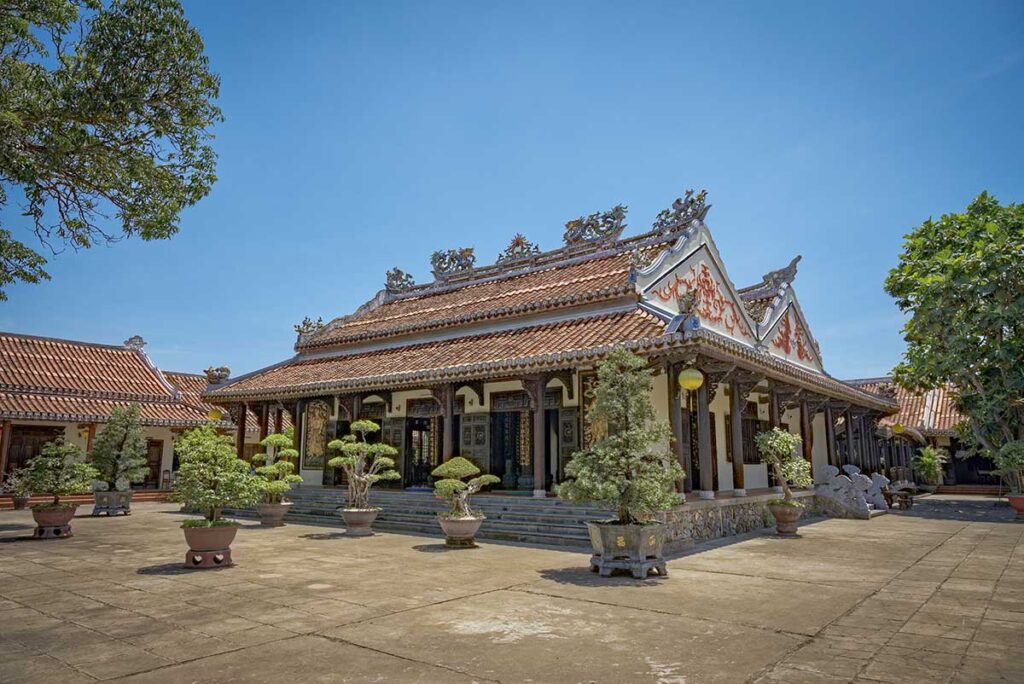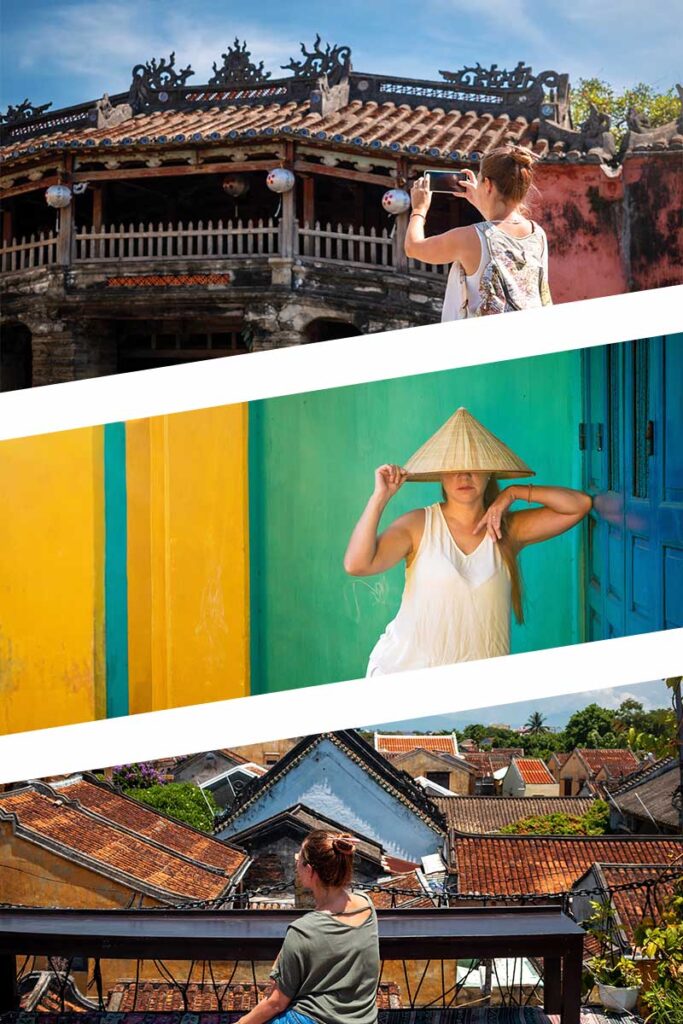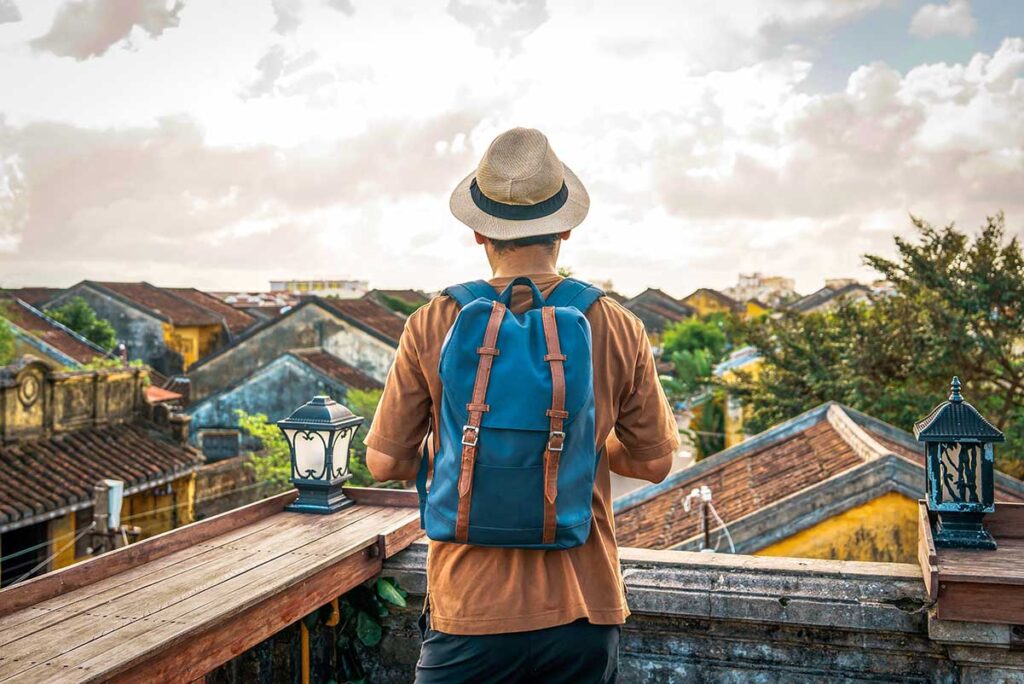What is Chuc Thanh Pagoda Like?
Chuc Thanh Pagoda is located about 1.5 kilometers from Hoi An Ancient Town, in a quiet, residential neighborhood with little tourist traffic. Unlike the more visited temples in the center, this is an active Buddhist monastery, home to practicing monks and a place of genuine spiritual life.
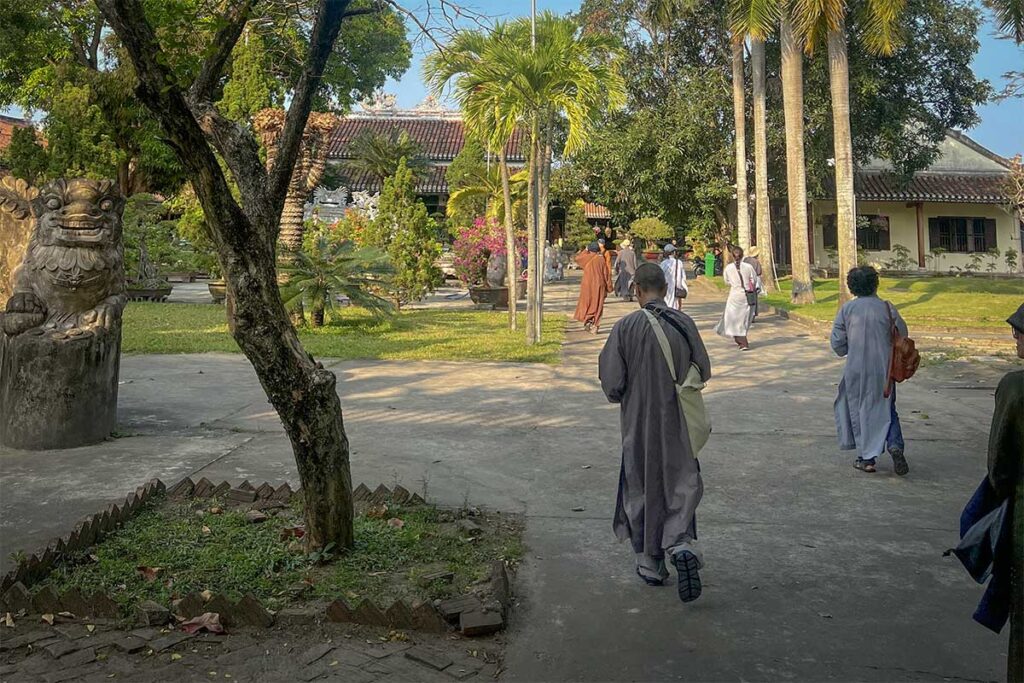
The grounds are peaceful and well-kept, with bonsai trees, quiet courtyards, tomb towers, and shaded walkways. You’ll find no crowds or souvenir stalls here — just a serene space that invites slow walking, quiet thought, or sitting for a few moments in stillness. It’s a place best suited to those looking to experience a more authentic and reflective side of Hoi An.
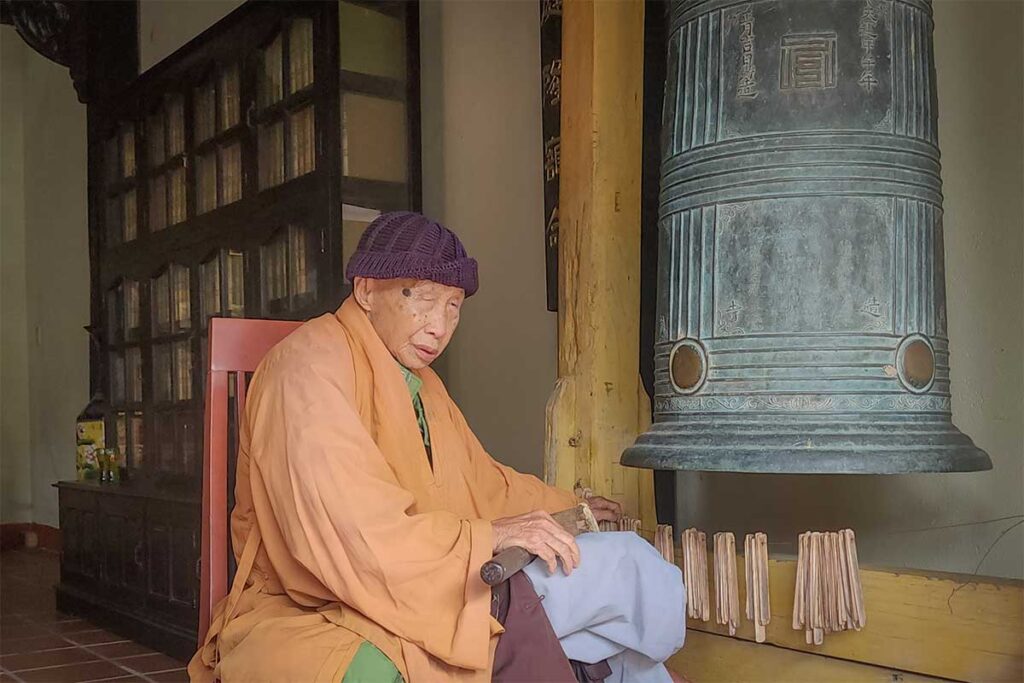
History of Chuc Thanh Pagoda
Chuc Thanh Pagoda was founded in 1715 by Zen Master Minh Hai, a Chinese monk who played a central role in bringing Zen Buddhism (Lam Te sect) to Central and Southern Vietnam. The pagoda is considered the oldest Buddhist temple in Hoi An, and it became the starting point for a religious movement that would spread to over a hundred temples across the country.
Over the centuries, the pagoda has served as a place for Buddhist learning, monastic training, and local devotion. It still holds commemorative ceremonies for its founder and serves as a gathering place for monks from across the region — continuing its role as both a spiritual and cultural landmark in the community.
Hoi An Walking Tour by Local Guide
- Experience Explore Hoi An’s Ancient Town with an expert local guide and insider stories.
- Includes Market visit, traditional house, colorful temples, and coffee break by electric car.
Highlights & What to see
Chuc Thanh Pagoda may seem modest at first glance, but its layout and design reveal a layered and deeply spiritual space. Each area reflects Buddhist symbolism, local craftsmanship, and centuries of continuous worship. Here’s what to look out for during your visit:
1. Tam Quan Gate and Entrance path
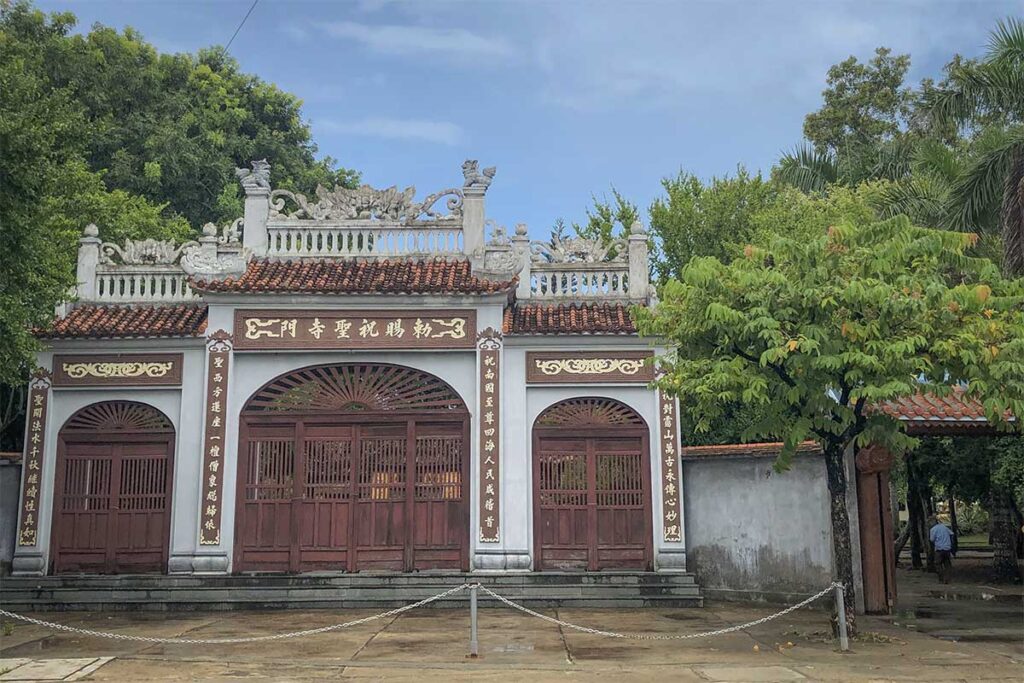
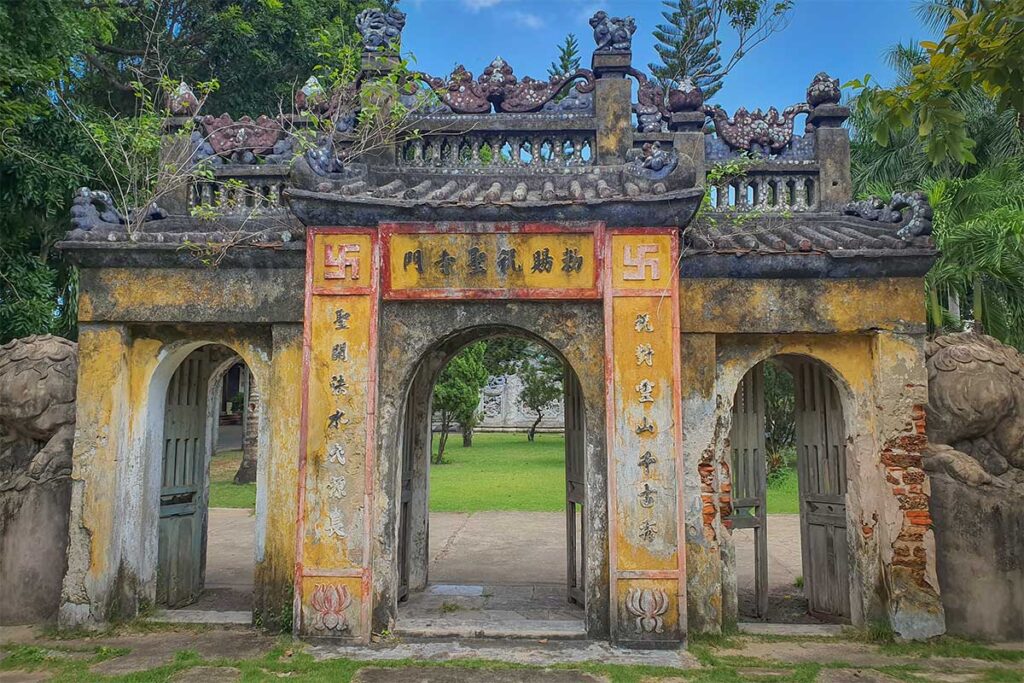
The temple entrance begins with a traditional Tam Quan gate, a three-arched structure topped with moss-covered roof tiles. Two stone lions sit on either side, symbolizing protection and spiritual strength. As you walk through, you’ll pass a peaceful garden path lined with bonsai trees, flowering plants, and a statue of Lady Buddha welcoming visitors into the sacred space.
2. The Main Hall (Chánh Đien)

The central worship space of the pagoda houses statues of Tam Thế Phật (Buddha of the Three Times), Maitreya, and 18 Arhats, each carved with fine detail. You’ll also see ceremonial objects like large wooden drums, bronze bells, and incense burners.
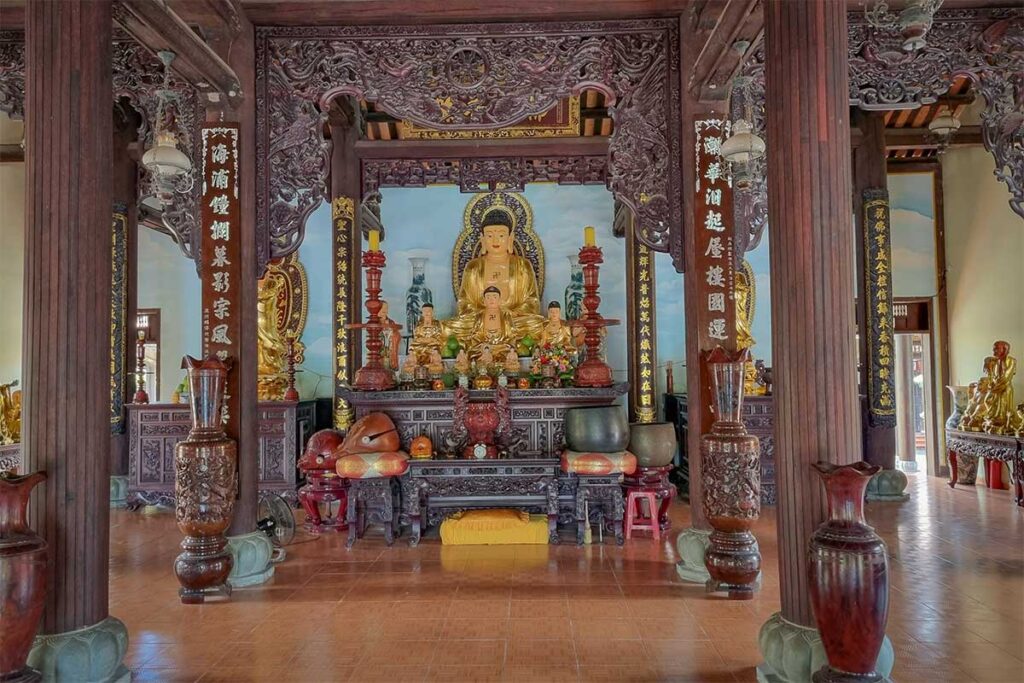
The roof decorations feature dragons and phoenixes, along with Buddhist motifs that tell stories from the life of the Buddha. Despite its spiritual weight, the hall feels open and peaceful — a space meant for quiet reverence rather than grandeur.
3. To Đuong Hall & Tomb Stupas
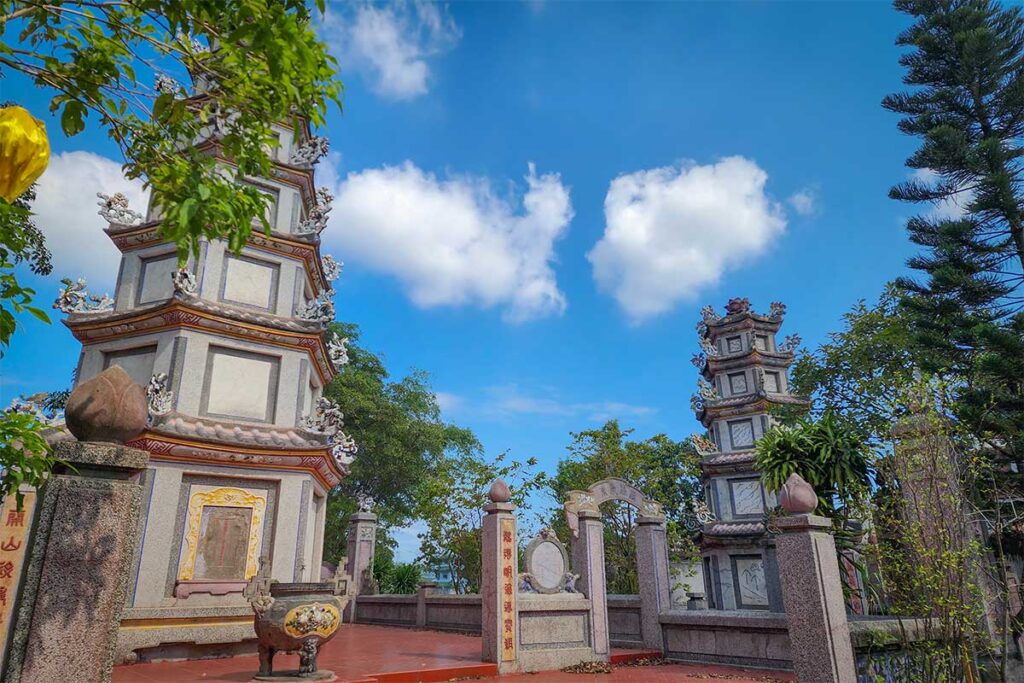
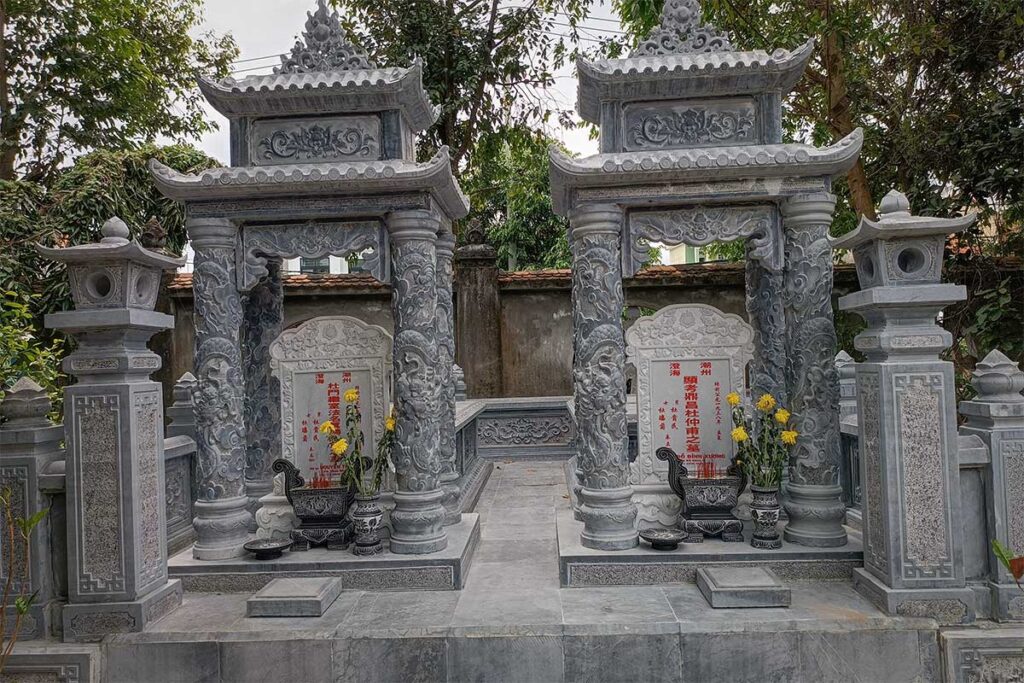
Behind the main hall is the Tổ Đường, or ancestral hall, dedicated to previous abbots and monks. This area contains stone stupas and graves, some of which date back centuries.
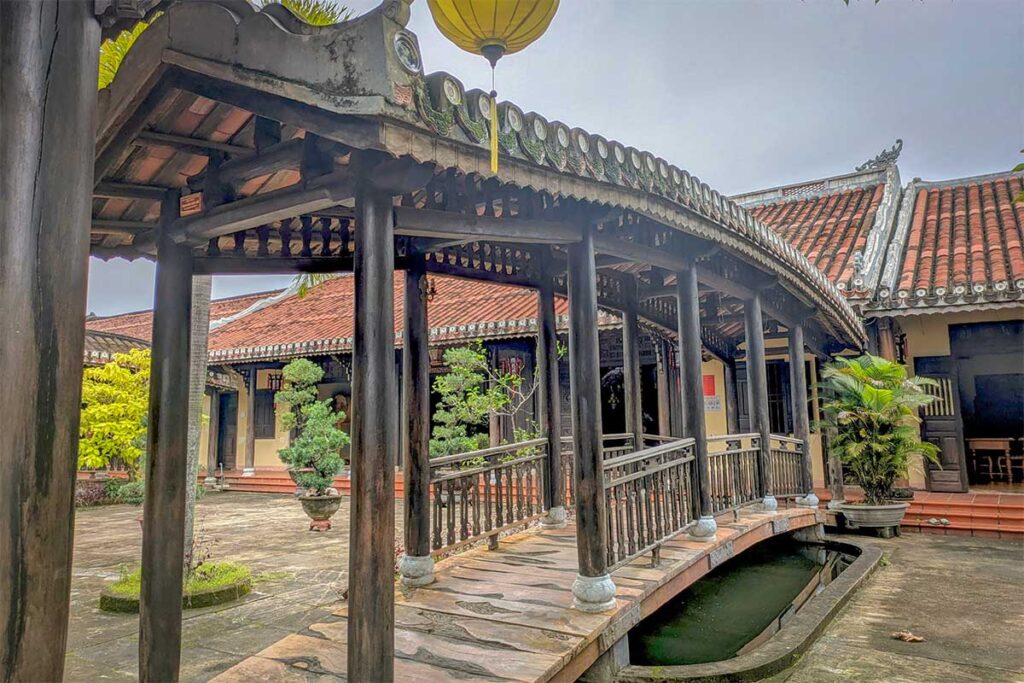
Though often overlooked, it’s one of the most spiritually significant parts of the complex — a place of remembrance and continuity. The engraved ancestor tablets and aged stone structures create a solemn and sacred atmosphere.
4. Courtyard & Meditation garden
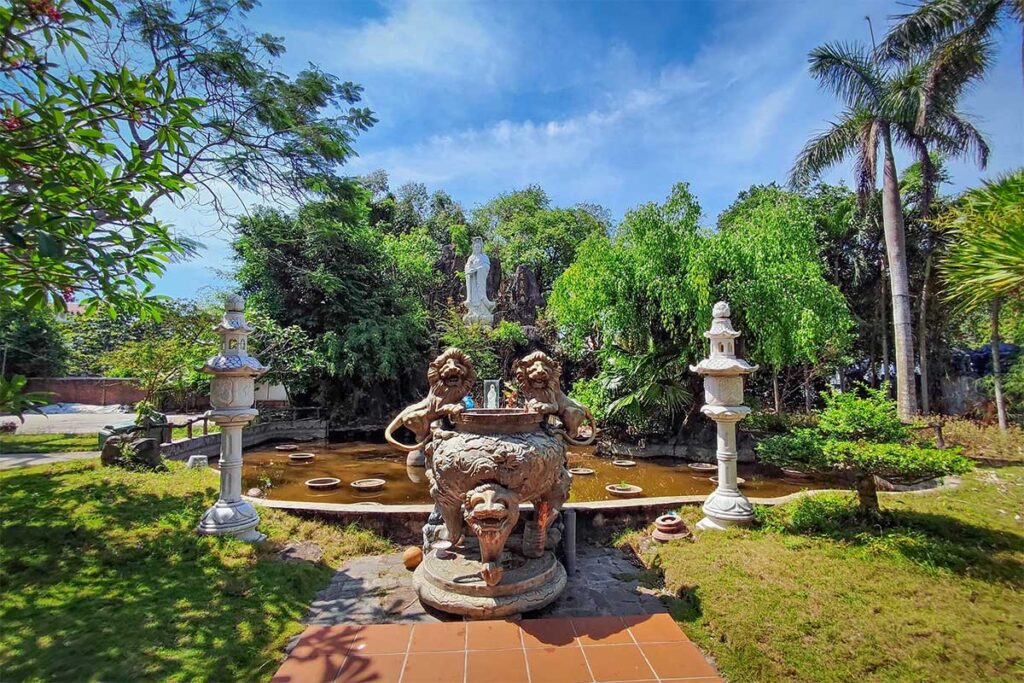
Between the halls is an open courtyard often used by monks for ceremonies or daily tasks. Visitors can take a seat under the shade of a tree or beside a pond, surrounded by neatly trimmed bonsai and ornamental plants. It’s not uncommon to find yourself alone here, making it an ideal space for quiet reflection or meditation away from the busier streets of Hoi An.
Visiting information
Location
Chuc Thanh Pagoda is located in Cam Pho Ward, about 1.5 kilometers from Hoi An Ancient Town — roughly a 15- to 20-minute walk. It’s set in a quiet, residential neighborhood, far from the tourist crowds and souvenir shops, giving it a more peaceful, local atmosphere.

How to get there
You can reach the pagoda easily by bike, taxi, or on foot if the weather is pleasant. It’s a good stop on a half-day countryside cycling route, especially if you’re on your way to Tra Que Vegetable Village or to the beach you can pass this with a minor detour. The entrance is a bit tucked away, so it helps to use Google Maps or Maps.me to guide you accurately.
Opening hours
Chuc Thanh Pagoda is typically open daily from around 7:00 AM to 5:00 PM. There’s no entry ticket, and it’s free to visit — though small donations are welcome to help with temple upkeep.
Entry and etiquette
As an active place of worship, it’s important to dress respectfully: cover your shoulders and knees, and avoid flashy or revealing clothes. Remove your shoes before entering any indoor temple spaces, and keep noise to a minimum, especially if monks are present. Photography is allowed in the garden and courtyard, but avoid using flash or taking photos during prayers or ceremonies.
Tips for visiting
- The best time to visit is in the early morning or late afternoon, when the weather is cooler and the temple grounds are especially quiet.
- If monks are present and chanting, it’s best to pause respectfully and observe — it’s a normal part of daily life at the temple and adds to the experience.
- Chuc Thanh Pagoda fits well into a bike ride or countryside walk. If you’re heading from the Old Town toward An Bang Beach, Tra Que, it’s easy to include with a short detour.
- Don’t expect a guided or curated visit — the pagoda isn’t a tourist attraction in the typical sense. It’s about the atmosphere, simplicity, and active spiritual life, which makes it refreshing compared to more crowded sites in Hoi An.
Is Chuc Thanh Pagoda worth visiting?
Yes — if you’re looking for a peaceful, authentic Buddhist site that feels far removed from the busy Old Town. Chuc Thanh Pagoda offers a quiet atmosphere, well-kept grounds, and a spiritual presence that doesn’t feel staged for tourists. In terms of architecture and atmosphere, it holds up well against the more central temples in Hoi An, but with the added benefit of being less crowded and more genuine.
It’s not ideal if you’re after something large-scale or interactive — there are no guides, displays, or organized activities here. But since it’s free to enter, and located along routes to the beach or countryside, it’s an easy and worthwhile stop — especially if you’re staying nearby or planning a bike ride outside the Ancient Town.
